 What if there was a way to lose weight without changing what you eat, taking any pills, or increasing the amount of exercise you get? It sounds too good to be true, but it isn’t!
What if there was a way to lose weight without changing what you eat, taking any pills, or increasing the amount of exercise you get? It sounds too good to be true, but it isn’t!
Research has found a natural way to lose weight simply by changing when you eat the foods you normally eat.
Let’s take a look at this research to see the benefits of this method.
It’s All About Timing
If you’ve ever tried to lose weight, you probably have thought about WHAT you are eating, but perhaps you didn’t consider WHEN you were eating.
A study from 2013 looked at the difference between those eating a high caloric breakfast vs. those eating a high caloric dinner.
They split women into 2 groups. The first had 700 calories at breakfast, 500 at lunch, and 200 at dinner. The second group ate 200 at breakfast, 500 at lunch, and 700 calorie at dinner time. Both groups were on a reduced calorie diet of about 1400 calories.
The Big Breakfast Group
- Lost more weight
- Lost more inches at waist
- Had greater reductions in fasting glucose
- Had greater reductions in fasting insulin
- Greater decreases in triglycerides
- Had lower hunger scores and higher satiety scores
This study was on overweight and obese women.... BUT... another study had similar findings of better blood sugar and insulin control in lean women with PCOS.
Effects of caloric intake timing on insulin resistance and hyperandrogenism in lean women with polycystic ovary syndrome - PubMed (nih.gov)
So, they weren’t lying… breakfast really may be the most important meal of the day!
Dr. Jamie
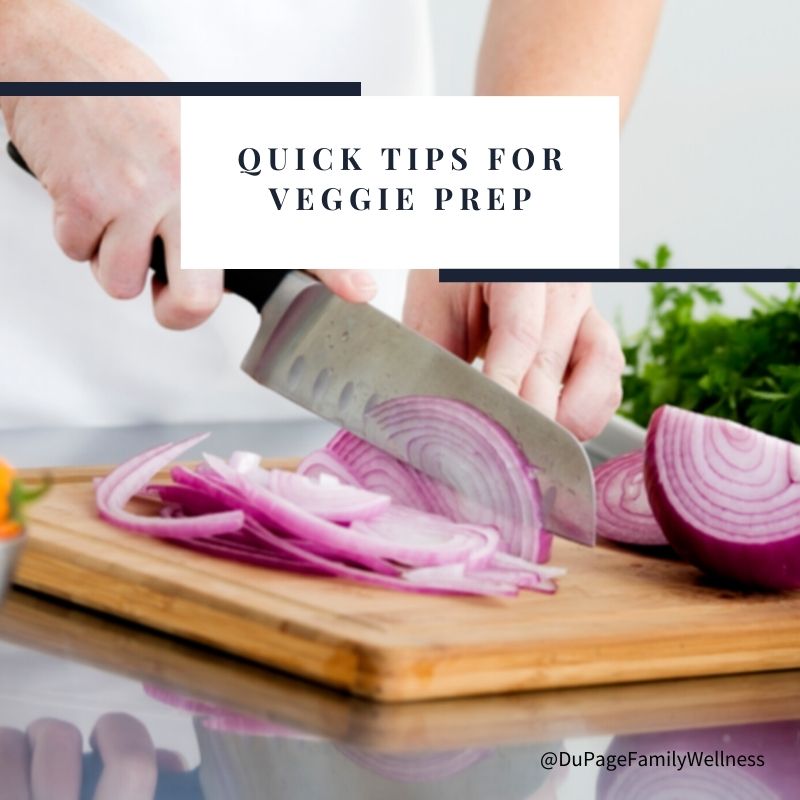 One of the main concerns people have when trying to eat a nutrient-rich diet of whole foods is time! It takes time to plan a meal, shop for ingredients, prep the meal, and cook it. Even people who know food cooked at home is healthier option can feel overwhelmed by the time it takes to prepare a meal.
One of the main concerns people have when trying to eat a nutrient-rich diet of whole foods is time! It takes time to plan a meal, shop for ingredients, prep the meal, and cook it. Even people who know food cooked at home is healthier option can feel overwhelmed by the time it takes to prepare a meal.
It is important to recognize this reality and look for ways to make cooking from scratch a little easier. Once we become more confident in our ability to create a tasty meal quickly, we will be less tempted to grab a meal of processed food.
Since fruits and vegetables are important ingredients in most real food recipes, learning to cut them quickly will be important.
Chopping Quickly by Hand
Learning to chop and dice vegetables is a game changer. If you are a slow chopper, making meals can seem to take forever. Cutting will go so much faster for you with the proper knife, a little practice, and the following cutting trick.
Let’s start by considering the best type of knife for the job. Many people feel more comfortable with smaller knives. But chopping will be quite a bit more efficient with a big sharp knife. It can be intimidating to use a large knife, but don’t let that hold you back from trying. Just start slowly as you get used to it, and before long you will be chopping like a pro.
Now that you have a good knife for the job, here is a trick that is especially helpful for those circular vegetables - onion, zucchini, carrot, eggplant - that keep rolling around as you try to cut them.
- Cut the vegetable in half long ways
- Place the flat sides down, so the food doesn't roll away from you.
- Make quick slices lengthwise.
- Slice in the other direction, across all the strips.
- Use them in your recipe or eat them straight.
It takes time to master any skill. But the more you chop, the faster you’ll get!
Using a Food Processor
Many people are intimidated to use a food processor, but it is such a helpful tool. It slices and shreds things so efficiently and evenly.
Once you set it up, you can slice (or shred) a bunch of vegetables really quickly. It’s helpful to think about what vegetables you will need for the next several days. Even if you aren’t ready to cook all your meals at once, you can prepare the vegetables. This keeps you from having to set up your food processor and clean it multiple times throughout the week.
Read more ...
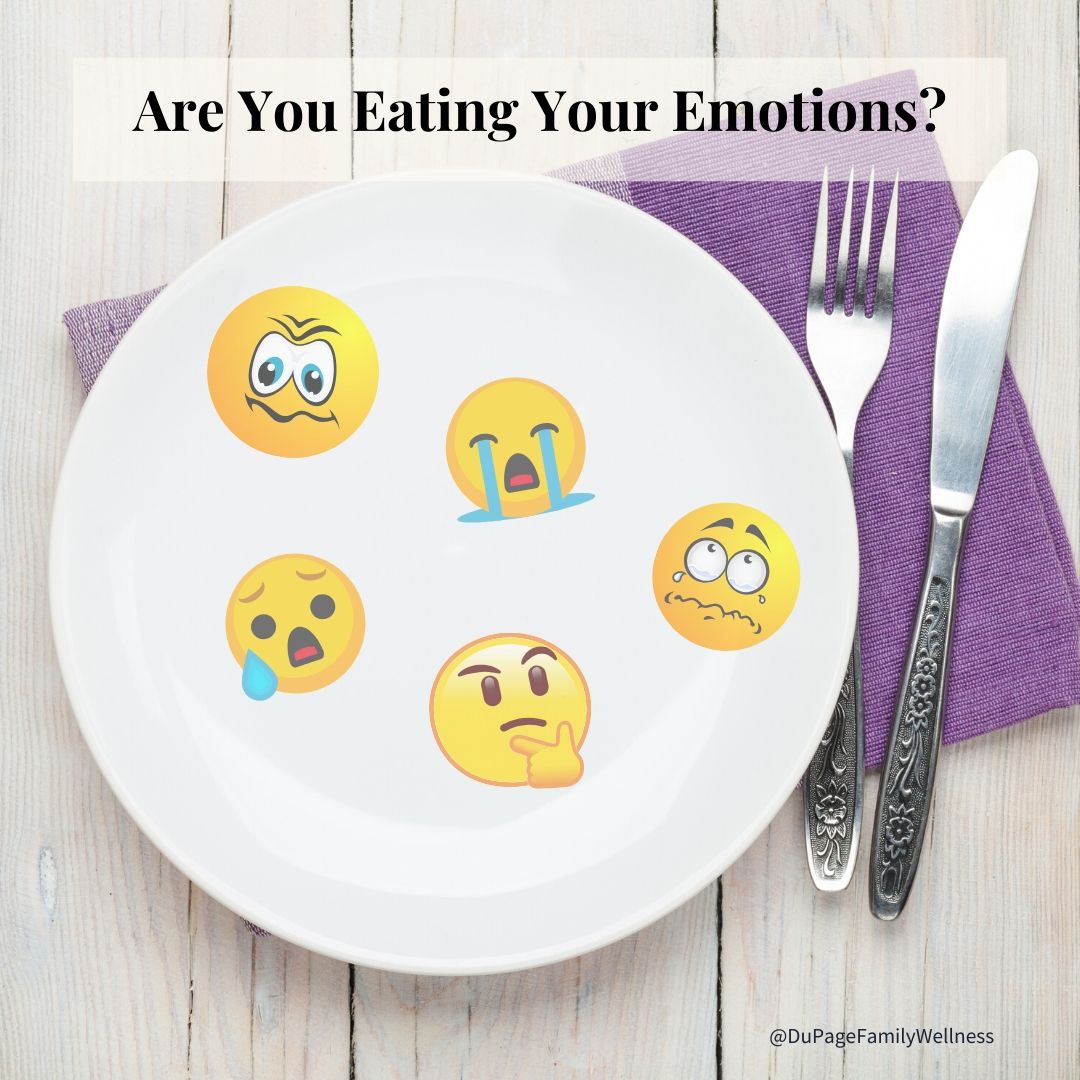 The state of our world has brought stress levels to an all time high. Illinois shelter in place orders were issued over 8 weeks ago, and our routines have been significantly impacted. As a result many people are dealing with more loneliness, boredom, and depression than they ever have before.
The state of our world has brought stress levels to an all time high. Illinois shelter in place orders were issued over 8 weeks ago, and our routines have been significantly impacted. As a result many people are dealing with more loneliness, boredom, and depression than they ever have before.
When we are faced with challenging times and strong emotions, it can be easy to turn to food for comfort. Eating in these moments may be an attempt to meet emotional needs rather than physical ones. Let’s take a look at emotional eating and what we can do to deal with it in these extreme times!
What is Emotional Eating?
When we feel sad, anxious, lonely, or angry it can be tempting to reach for food. When we reach for food to fill an emotional need rather than a physical one, it is called emotional eating.
Emotional eating is an attempt to self-soothe and has a way of numbing our feelings temporarily. Not only are we distracted by the sweet or salty tastes, but it can affect the chemicals in our body. When we consume sugar our brain produces a surge of dopamine. Since dopamine is known as the feel good hormone in the body, it brings us temporary relief from difficult feelings.
While soothing ourselves this way may feel better in the moment, emotional eating isn't the best way to handle our emotions. It doesn’t effectively deal with the underlying emotions and often leads to regret. Emotional eating may also create unintended health consequences if we indulge in it often. There are many better ways to soothe ourselves, but we must first recognize when we are attempting to eat our emotions.
Building Awareness
Since we often emotionally eat without realizing what we are doing it will be important to cultivate self-awareness. By checking in with yourself and knowing the clues, you can determine whether you are truly hungry.
Read more ...
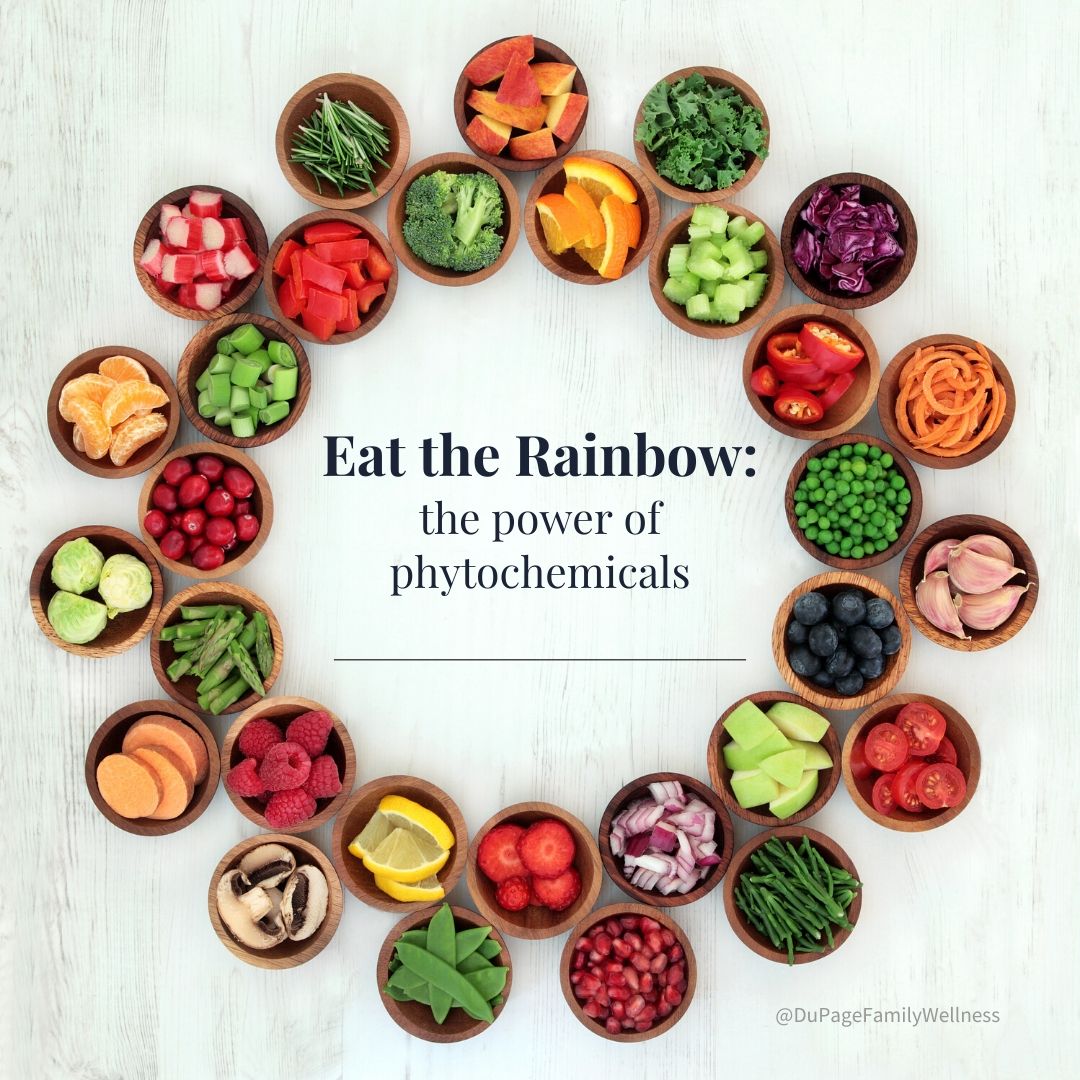 Most people know that vitamins and minerals support proper immune system function, but give little thought to the need for phytochemicals.
Most people know that vitamins and minerals support proper immune system function, but give little thought to the need for phytochemicals.
What are Phytochemicals?
Phytochemicals are naturally occurring compounds produced by plants. The beautiful colors of fruits and vegetables are derived from these chemicals, and they are known to have protective properties.
What do they do for the plant?
In addition to making the plants pretty, they have an important role in defending the plant against dangers. Phytochemicals act as the plants immune system protecting them from viruses, bacteria, fungi, and pests. Since plants can’t run away or go to the doctor's office, they need phytochemicals help them stay healthy.
What can do they do for us?
According to Dr. Jeffrey Bland, there are many health benefits for us when we consume the phytochemicals in these plants. Bland explains that "when eaten by humans, (phytochemicals) have effects upon immuno-rejuvenation". This goes beyond simply supporting your immune system, and actually helps your immune system heal so it can function more effectively.
So what can you do with this knowledge?
To begin with see how many colors of veggies you can get on your plate today!! Then the next time you shop, be sure to pick a large variety of colorful fruits and vegetables to enjoy. It is fun to challenge yourself to buy at least three brightly colored vegetables each time you go to the store. Make sure that some of them are ones that you have never tried before. You will get all the phytochemicals from these plants and may find a new favorite!
It is amazing how our nutrition impacts our body. Our choices can not only support our immune system, but assist with immuno-rejuvenation!
You can learn more by listening to Dr. Bland speak with Dr. Hyman about immuno rejuvenation in the Doctor's Farmacy Podcast episode 105.
Dr. Jamie
#8essentials #RealFood
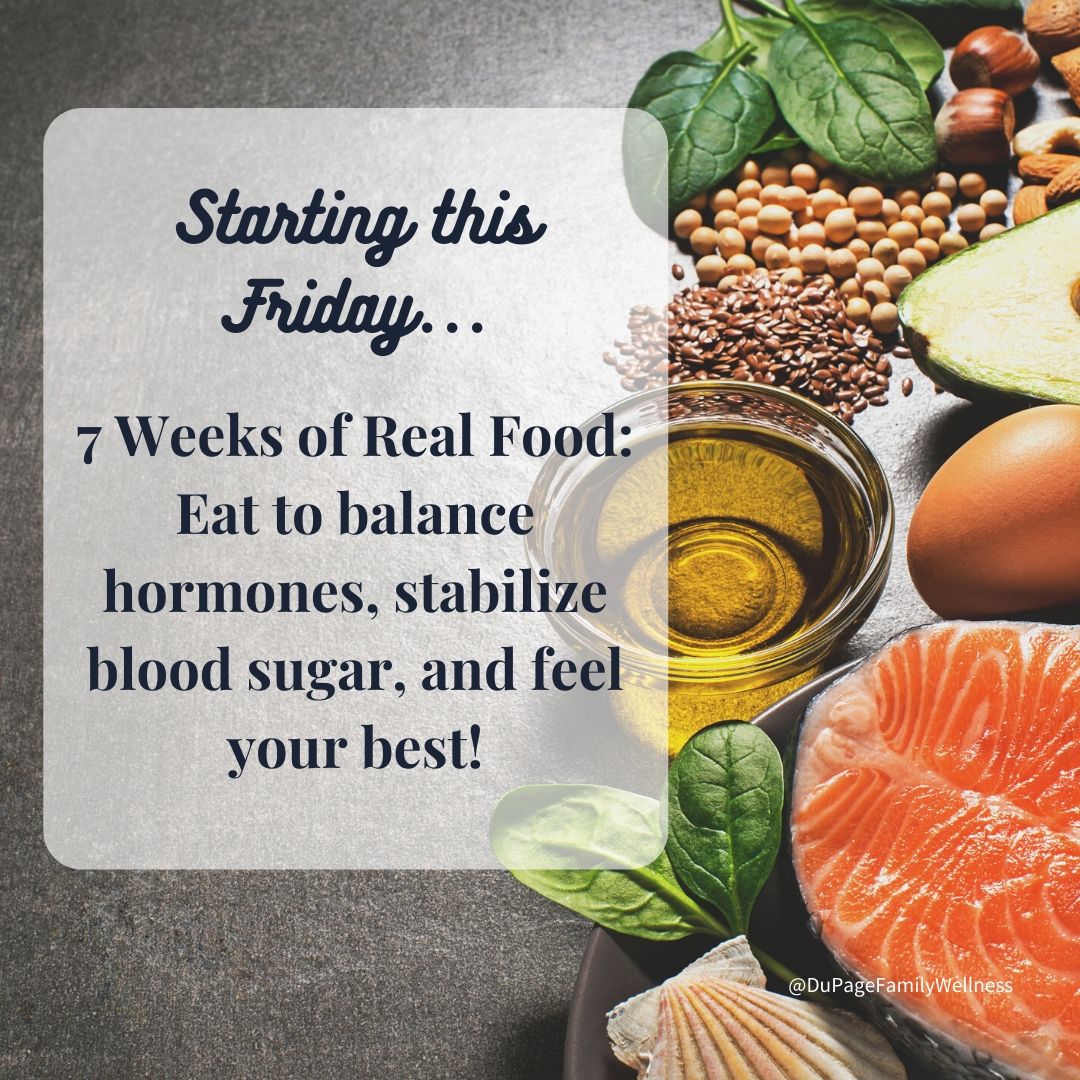 Are you ready to make some changes to start feeling great? Do you want to encourage your family to be healthy by setting a good example for them and teaching them life-long healthy habits? Are you thinking about becoming pregnant and want to prepare your body by giving it the most nutrient dense food possible?
Are you ready to make some changes to start feeling great? Do you want to encourage your family to be healthy by setting a good example for them and teaching them life-long healthy habits? Are you thinking about becoming pregnant and want to prepare your body by giving it the most nutrient dense food possible?
If so, Dr. Jamie’s program “7 Weeks of Real Food: Eat to balance hormones, stabilize blood sugar, and feel great!” is for you.
What to Expect
This online self-paced course is full of great information, sample meal plans, and shopping lists distributed through daily emails. It provides guidance on what foods to eat freely, what to limit, and what to avoid completely. All of the material will be given through DAILY emails. But you don’t have to make these changes on your own!
Participants are invited into a community of like-minded individuals who are on similar paths to healing. We will connect weekly through optional zoom calls and an exclusive Facebook group. The community is where we will support one another, ask questions, & exchange ideas.
Throughout this “7 Weeks of Real Food”, you will learn how to make LIFELONG changes to your diet so that you can improve your health and longevity. For less than $2/day, you can learn skills and form healthy habits that will help you to feel better for a lifetime!
Why Now?
Most people are experiencing increased levels of stress in their lives today! Since stress wreaks havoc on your system, now would be a great time to support it through proper nutrition.
Your gut impacts literally EVERYTHING in your body! Investing in gut health will make a huge impact in your body. Your cycle, hormones, gut, skin, brain, and immune system will thank you!
Read more ...
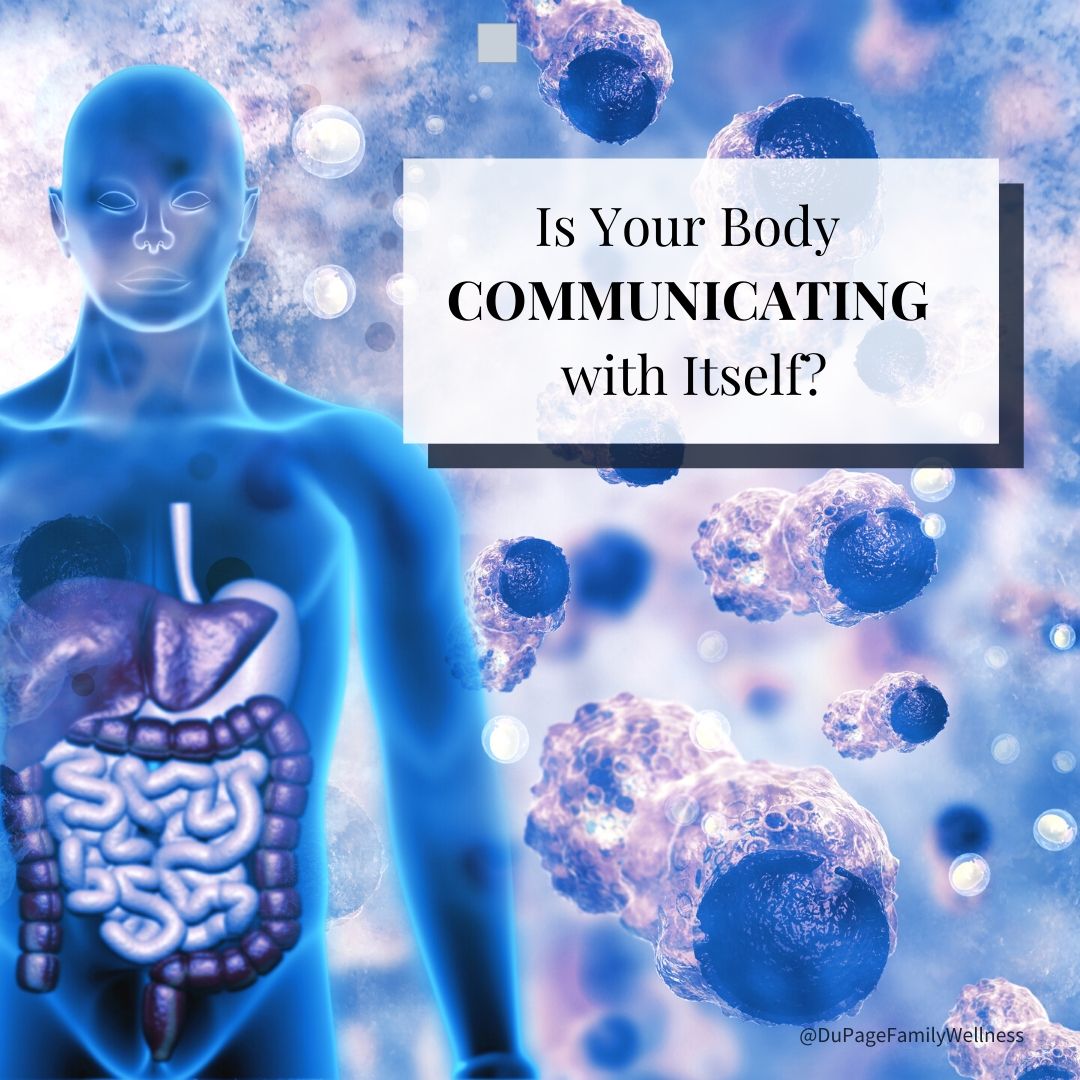 Living in the Midwest, I’m sure you have seen a burr stuck to your pants after walking in the woods. It can be rather annoying to remove these burrs because they were designed to securely attach to whatever they come in contact with. The Velcro like material on a burr is similar to structures in your body called glycans.
Living in the Midwest, I’m sure you have seen a burr stuck to your pants after walking in the woods. It can be rather annoying to remove these burrs because they were designed to securely attach to whatever they come in contact with. The Velcro like material on a burr is similar to structures in your body called glycans.
Glycans attach to the cell membranes within your body the way a burr sticks to your pants, but glycans have a very important reason to attach in this way.
Literature suggests that glycans support healthy cell-to-cell communication within the human body, helping your body to function the way it was designed to!
What Is Glycosylation?
Glycosylation is a process that helps the 30 trillion cells in our body communicate with each other more effectively. It is one of the eight essentials that we promote, yet many people have never heard of it!
Glycosylation takes place when a glycoprotein hooks into the cell membrane. You see, a glycoprotein is a protein that has a carbohydrate (sugar) attached to it. When the protein attaches to the cell membrane, the carbohydrate extends off of the cell. Together it acts like a little antenna to help with better cell-to-cell communication.
Beneficial Sugars!
After all of the negative press sugar has been getting lately, it may be surprising to you that anything good can be associated with sugar. It is important to remember that we are talking about a specific type of sugar found in glyconutrients.
Read more ...
 What if there was a way to lose weight without changing what you eat, taking any pills, or increasing the amount of exercise you get? It sounds too good to be true, but it isn’t!
What if there was a way to lose weight without changing what you eat, taking any pills, or increasing the amount of exercise you get? It sounds too good to be true, but it isn’t! 

 One of the main concerns people have when trying to eat a nutrient-rich diet of whole foods is time! It takes time to plan a meal, shop for ingredients, prep the meal, and cook it. Even people who know food cooked at home is healthier option can feel overwhelmed by the time it takes to prepare a meal.
One of the main concerns people have when trying to eat a nutrient-rich diet of whole foods is time! It takes time to plan a meal, shop for ingredients, prep the meal, and cook it. Even people who know food cooked at home is healthier option can feel overwhelmed by the time it takes to prepare a meal. The state of our world has brought stress levels to an all time high. Illinois shelter in place orders were issued over 8 weeks ago, and our routines have been significantly impacted. As a result many people are dealing with more loneliness, boredom, and depression than they ever have before.
The state of our world has brought stress levels to an all time high. Illinois shelter in place orders were issued over 8 weeks ago, and our routines have been significantly impacted. As a result many people are dealing with more loneliness, boredom, and depression than they ever have before.  Most people know that vitamins and minerals support proper immune system function, but give little thought to the need for phytochemicals.
Most people know that vitamins and minerals support proper immune system function, but give little thought to the need for phytochemicals. Are you ready to make some changes to start feeling great? Do you want to encourage your family to be healthy by setting a good example for them and teaching them life-long healthy habits? Are you thinking about becoming pregnant and want to prepare your body by giving it the most nutrient dense food possible?
Are you ready to make some changes to start feeling great? Do you want to encourage your family to be healthy by setting a good example for them and teaching them life-long healthy habits? Are you thinking about becoming pregnant and want to prepare your body by giving it the most nutrient dense food possible?  Living in the Midwest, I’m sure you have seen a burr stuck to your pants after walking in the woods. It can be rather annoying to remove these burrs because they were designed to securely attach to whatever they come in contact with. The Velcro like material on a burr is similar to structures in your body called glycans.
Living in the Midwest, I’m sure you have seen a burr stuck to your pants after walking in the woods. It can be rather annoying to remove these burrs because they were designed to securely attach to whatever they come in contact with. The Velcro like material on a burr is similar to structures in your body called glycans. 